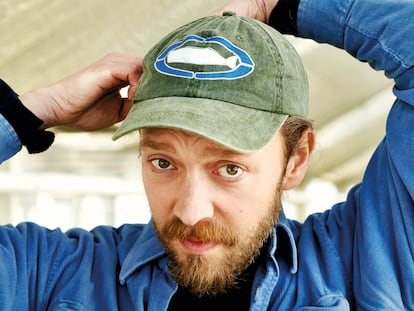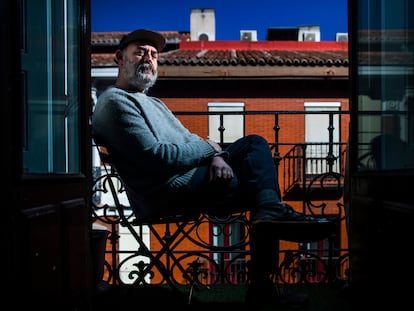Venezuelan comic-books also migrate
‘Nido,’ the new graphic novel by illustrator Laura Guarisco, presents a moving portrait of migration and diaspora
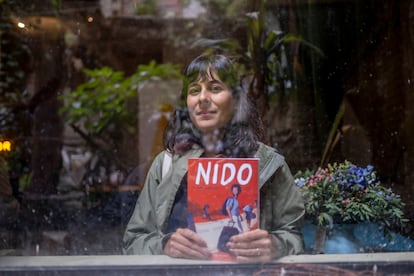

Like many Venezuelans who left their homeland, illustrator Laura Guarisco (Caracas, 32) has El Ávila, the mountain that stands sentinel over the Venezuelan capital, tattooed in her memory. She also has it tattooed on her skin: its silhouette prominently displayed on her left arm. “That’s how crazy Caraqueños can be about El Ávila,” she says, laughing and showing off the tattoo. On her right arm, she has another image: a drawing of a migratory warbler, the songbird she uses as a metaphor for migration in her new book, Nido (Planeta Cómic), a moving graphic novel about the Venezuelan diaspora (“nido” is Spanish for “nest”).
Nido’s vignettes are charged with the nostalgic images of the Venezuelan migrant experience: from the maroon T-shirts to the suitcases dyed the colors of the flag so many wear on their backs. Guarisco’s comic portrays the journeys of those who traverse open plains and steep mountains, by bus, on foot, or hitchhiking, in search of better opportunities in neighboring Colombia.
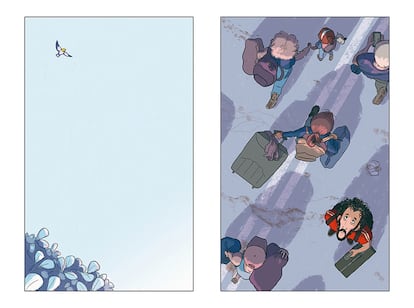
“The story tries to connect with the emotional side of things,” to construct the collective memory of the wounds that so many Venezuelans carry with them, says Guarisco, an architect and illustrator who lives in Medellín, Colombia. We’re sitting on the terrace of a café overlooking Avenida Jiménez in Bogotá's downtown historic center, located on the slopes of Monserrate Hill, a landmark that pales in comparison to El Ávila. Guarisco came to Bogotá to participate in the Entreviñetas Festival, a gathering dedicated to comics and other related artforms.
The book begins with bird-watching — a scene that introduces us to Ángel, the novel’s protagonist, who has migrated across the Colombian border to settle in the city of Medellín, much like the author herself. Ángel leaves due to shortages, hyperinflation, and the violent repression of the protests against the regime of Nicolás Maduro that swept the city of Caracas: real conditions and events that merge with the novel’s fictional story. In Guarisco’s drawings, one can almost hear the sounds of suitcase wheels that have become the soundtrack of the binational bridge connecting Cúcuta, Colombia to the Venezuelan state of Táchira — a bottleneck on one of the largest migration trails in the world.
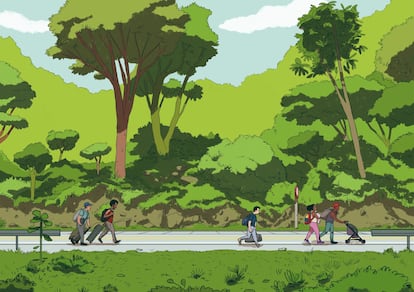
More than seven million people have left Venezuela in successive waves, driven by the political, social and economic crisis. Although they have dispersed all across the continent, Colombia is by far the main host country. Official figures — as of October 2022 — show that 2.9 million Venezuelans live on this side of the border, the vast majority with the intention to stay. Of these, almost 240,000 live in Medellín.
Each migrant carries their own story with them. Guarisco decided to leave Venezuela in 2016. “At that time, I was working for an architecture firm, but there was a lot of inflation; one of the main reasons I left was because I no longer had enough money to buy things,” she says. “Many people had already left the country, I was running out of friends in the city where I lived, and I started looking for job offers in Colombia.” Her mother was born in Barranquilla, Colombia, so she had dual nationality. First, she went to the capital, where she still has family. There, she worked as a draftsperson on various architectural projects. Eventually, she moved to Medellín.

Though she illustrates them in great detail in Nido, Guarisco has never actually crossed the bridges that connect Táchira with Norte de Santander — though she has crossed the border through Maicao, further north, in La Guajira, when it was impossible to get plane tickets. “I was very shocked to watch all those people crossing the bridge on the news,” she says. “I put myself in their shoes. I was very moved by the images of entire families crossing with their suitcases, and also by the stories of my friends. Many of the friends I made in Medellín had crossed the border to get to Colombia.” She began collecting photographs, watching documentaries, documenting what she had observed in Maicao, and she even retraced the whole route on Google Street View, then brought it all togther to tell a story that captures the reader from beginning to end.
Question: Did you set out to create a character that would serve as an archetype of the diaspora?
Answer: I wanted to make a character that would look very Venezuelan. And honestly, he is kind of made up of pieces of my Venezuelan friends. The stories I was seeing, hearing, the ones people close and not so close to me told me, they ended up becoming Ángel when I finally sat down to draw him. I always imagined a male character because I wanted to tell the story from the perspective of the demonstrations. When I went to marches, I was very impressed by the young men who stayed until the end. Physically, it ended up resulting in little pieces of friends. In the end, all the stories that happen to Ángel have happened to many of us. We all suffered from not having water, from the shortages and the protests, either directly or indirectly; all of the demonstrations, all of the dead.
Q: The Greek writer Theodor Kallifatides says that to emigrate is to move away from oneself. How do you manage that kind of separation from Venezuela?
A: It’s true that you move away from the person you were, but you also grow closer to a completely new one, which you don’t yet fully know. And this results in the creation of a new person. My experience with Venezuela was very painful at first. It’s not the same to leave your country by your own decision, to study something, to get to know a new culture or to go sightseeing, than to have to leave because you have no other option. It’s leaving forcibly and leaving behind family, friends, places, and leaving behind who you were. It’s a kind of mourning. Drawing helped me to surface all of those emotions and be able to face them, to put them down on paper and see them from the outside. I’m a little more at peace with my relationship to Venezuela now. I’ve healed many things. I can talk about Venezuela calmly now. I have gone back. I feel like I’m from both places at once, because one cannot be from a single place, really. One is from all the places where one exists, temporarily or permanently. One must also take advantage of where one is living.
Q: Do you consider Medellín your home now?
A: Medellin was also the city that brought me back to comics, the city where I found the spaces that helped me continue working on what I wanted to be working on. Since I was a kid, I always wanted to make comics. Besides, it’s very similar to Caracas, it reminds me of my hometown. I met wonderful people who helped opened a path for me. So, I’m very fond of it. It’s been almost seven years now, and I feel like I’m from Medellín, even though people always ask me where I’m from when they hear my accent.
Sign up for our weekly newsletter to get more English-language news coverage from EL PAÍS USA Edition
Tu suscripción se está usando en otro dispositivo
¿Quieres añadir otro usuario a tu suscripción?
Si continúas leyendo en este dispositivo, no se podrá leer en el otro.
FlechaTu suscripción se está usando en otro dispositivo y solo puedes acceder a EL PAÍS desde un dispositivo a la vez.
Si quieres compartir tu cuenta, cambia tu suscripción a la modalidad Premium, así podrás añadir otro usuario. Cada uno accederá con su propia cuenta de email, lo que os permitirá personalizar vuestra experiencia en EL PAÍS.
¿Tienes una suscripción de empresa? Accede aquí para contratar más cuentas.
En el caso de no saber quién está usando tu cuenta, te recomendamos cambiar tu contraseña aquí.
Si decides continuar compartiendo tu cuenta, este mensaje se mostrará en tu dispositivo y en el de la otra persona que está usando tu cuenta de forma indefinida, afectando a tu experiencia de lectura. Puedes consultar aquí los términos y condiciones de la suscripción digital.
